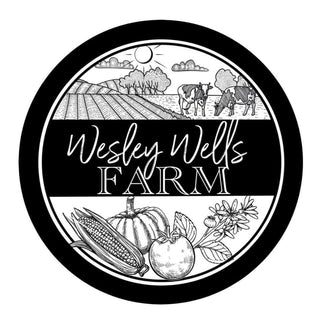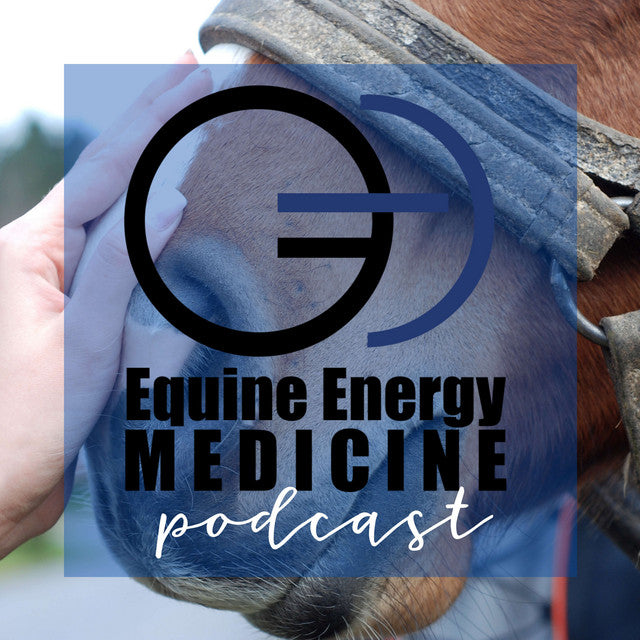Horse manure, often considered a byproduct or waste on many farms, is actually a goldmine for gardeners and horse owners alike. When processed correctly, this natural material transforms into a nutrient-rich compost that can revitalize soils, boost plant growth, and support sustainable agriculture. In this guide, you’ll learn how to compost horse manure in 10 clear steps, understand key concepts about horse manure composting, and explore the latest best practices that ensure faster and more effective results.
Using the right approach to composting horse manure not only manages waste responsibly but also saves money on fertilizers and reduces environmental impact. Professional equestrian facilities, backyard farms, and hobbyists across the USA have adopted horse manure composting as a critical part of land and animal management—let’s explore how you can do it too.
Understanding composted horse manure and its benefits
Before getting into the steps, it’s essential to understand what makes composted horse manure so valuable and how it differs from fresh manure.
Composted horse manure is horse waste that has decomposed through controlled aerobic (oxygen-rich) processes. This breakdown eliminates harmful pathogens, weed seeds, and offensive odors while preserving nutrients. The resulting product is a soil amendment that improves structure, water retention, and nutritional content, making it ideal for gardens, lawns, and pastures.
Benefits of using horse manure compost:
-
Recycles barn waste into something useful
-
Reduces landfill use and environmental pollution
-
Improves soil fertility and structure
-
Supports sustainable farming and gardening
With this foundation, let’s move into the practical steps for turning fresh stall muck into rich, crumbly compost.

Step 1: Collect and separate horse manure
Starting well is half the job. Efficient collection is crucial for successful composting horse manure.
Tips for collecting manure:
-
Use a manure fork and wheelbarrow to gather droppings daily.
-
Remove unwanted materials, such as plastic, rocks, and non-organic debris.
-
For best results, collect manure mixed with bedding like straw or wood shavings, as these materials help improve air flow in your pile.
Daily collection keeps the material fresh and manageable while minimizing the risk of parasites and unpleasant odors around your facility.
Step 2: Choose a suitable composting site
The place you pick for your horse manure composting project affects the results and the convenience of the process.
Site selection keys:
-
Pick a dry, well-drained, and level area, ideally with partial shade.
-
Ensure the site is accessible for wheelbarrows or machinery.
-
Keep your compost pile or bins at least 100 feet away from wells or water sources to prevent contamination.
A dedicated site ensures you comply with local regulations and makes the entire process easier year-round.
Step 3: Build or buy a horse manure compost bin
While you can compost horse manure in open piles, using a horse manure compost bin speeds up the process and reduces mess.
Options for compost bins:
-
Wooden or plastic bins (home-built or purchased)
-
Three-bin systems (for turning and maturing compost)
-
Wire mesh or pallet enclosures
Compost bins retain heat, discourage pests, and are generally more efficient. If you prefer a DIY approach, you can construct a compost bin from recycled materials, ensuring it’s at least 4 feet wide, 4 feet long, and 4 feet high for optimal microbial activity.
Step 4: Form your compost pile or load the bin
Now it’s time to set up your initial pile or load your bin with the manure and bedding collected.
How to arrange your compost:
-
Start with a base layer of coarse material (twigs, wood chips, old straw) to aid aeration.
-
Add layers of manure mixed with bedding.
-
Alternate between “green” (fresh manure) and “brown” (shavings, straw) for ideal carbon-to-nitrogen balance.
-
Aim for a pile at least 3 feet high to generate enough heat for rapid decomposition.
Arranging the materials this way creates a balanced environment for composting microbes to thrive.

Step 5: Monitor moisture levels
Moisture is critical for composting horse manure. Too dry, and microbes go dormant. Too wet, and the pile can turn anaerobic (lacking oxygen), causing foul odors.
Ideal conditions:
-
The manure pile should feel like a wrung-out sponge—moist but not soggy.
-
In dry climates or seasons, water the pile as needed.
-
In wet weather, cover your compost with a tarp to prevent waterlogging.
Proper moisture management accelerates decomposition and keeps your pile healthy.
Step 6: Turn the compost regularly
Turning or aerating the compost is the fastest way to compost horse manure. Microbial activity depends on oxygen, and regular mixing supplies it in abundance.
How and when to turn:
-
Use a garden fork or compost turner to mix the pile every 1–2 weeks.
-
Move outer materials to the center and vice versa.
-
In a three-bin system, transfer material from one bin to the next as it decomposes.
Frequent turning can reduce composting time to as little as two or three months in warm conditions

Step 7: Monitor temperature and progress
Compost temperature signals microbial activity and progress. Hot composting (between 130°F and 150°F) kills weed seeds and pathogens, making your finished product safe and effective.
How to track progress:
-
Use a compost thermometer inserted into the center of the pile.
-
A well-managed pile will heat up within a few days, then cool as materials decompose.
-
If the temperature drops below 110°F and decomposition stalls, turn the pile and check moisture.
Monitoring ensures your pile is breaking down efficiently and alerts you to any adjustments needed.
Step 8: Troubleshoot common problems
Even with careful management, you might encounter a few hiccups. Here are some quick solutions:
Odor: Add more browns (shavings or straw) and turn the pile to improve aeration.
Pile too dry: Moisten gently with water.
Pile too wet or smelly: Add dry ingredients and cover with a tarp.
Not heating up: Check size, moisture, and turn the pile. Adjust the green/brown balance if necessary.
Proactively addressing these issues keeps your composting process on track.
Step 9: Cure and mature the compost
Once the active heating phase ends and the material looks broken down, it’s time to let your compost cure. Curing is essential for producing high-quality, stable compost.
Curing tips:
-
Let the compost sit for a minimum of 4–8 weeks.
-
The pile will cool and mature, making nutrients more available to plants and reducing the risk of damaging seedlings.
A well-cured compost is dark, crumbly, and smells earthy.
Step 10: Apply composted horse manure to soil
Your composted horse manure is now garden gold—ready to enrich soils and support healthy plant growth!
How to use finished compost:
-
Spread 1–2 inches of compost over garden beds and mix into the top 6 inches of soil.
-
Use as a side dressing for trees, vegetables, and shrubs.
-
Top-dress pastures or lawns to boost grass health.
Remember, compost will continue to break down in the soil, feeding plants naturally and promoting earthworm activity.

How to compost horse manure fast: Tips for speedy results
Transitioning to advanced tips, let’s focus on techniques for rapid horse manure composting. These industry trends and expert hacks can help you minimize waiting time:
-
Chop bedding and manure: Smaller particles decompose faster.
-
Monitor and regulate pile size: Optimal piles are 3–5 feet high and wide for best heat retention.
-
Add compost activators: Alfalfa meal, old compost, or commercially available starters introduce beneficial microbes.
-
Use a compost thermometer: Adjust turning and moisture based on actual temperature readings.
-
Cover your pile: Tarps retain heat and moisture, especially in climates with frequent rain or intense sun.
By following these tips, you’ll maximize the natural processes that drive fast composting.
Environmental and regulatory considerations
Being mindful of environmental regulations is a core aspect of responsible composting horse manure, especially in the USA.
-
Check local regulations: Manure management guidelines vary between states and municipalities.
-
Prevent runoff: Compost piles should be designed to stop nutrients from leaching into waterways.
-
Keep clear records: Especially for larger operations, tracking manure production and composting supports compliance.
Responsible practices protect ecosystems and support the reputation of your farm or facility.
Latest trends in horse manure composting
As sustainability, soil health, and waste reduction become more critical, several trends are shaping how people compost horse manure:
-
Closed-loop systems: Integrating manure composting into broader land management plans
-
On-site composting for small farms: Compact bins and tumblers designed for efficiency
-
Community-based composting: Shared facilities that serve multiple stables or neighborhoods
-
Composting technology: Aerated static piles with blowers for minimal labor and maximum speed
-
Regenerative agriculture: Using composted manure to rebuild soil organic matter and carbon storage
Adopting these trends helps future-proof your process, improves the environment, and enhances the reputation of equestrian operations.
Common mistakes to avoid when composting horse manure
Missteps can slow the process or produce poor-quality compost. Here’s how to stay on track:
-
Neglecting to turn the pile: Oxygen is critical—mix regularly.
-
Ignoring moisture: Too wet or too dry piles stall composting.
-
Composting only manure: Always add bedding or other carbon-rich material.
-
Composting manure with dewormer residues: Some medications persist in manure. Ensure enough time and temperature for safe breakdown.
Awareness is key. Adjusting as needed leads to reliable, high-quality results.

Quick checklist: How to compost horse manure (10 steps at a glance)
-
Collect and separate manure and bedding.
-
Select a dry, level composting site.
-
Build or source a suitable compost bin.
-
Form your pile with green and brown layers.
-
Maintain moisture at wrung-sponge level.
-
Turn or aerate your compost regularly.
-
Monitor temperature and pile progress.
-
Address problems like odor, dryness, or slow breakdown.
-
Cure compost to maturity for at least 4 weeks.
-
Apply finished compost to soil, gardens, or pastures.
This checklist serves as a practical summary for daily or weekly reference.
Conclusion
Composting horse manure is a straightforward process that transforms a common barnyard challenge into an agricultural asset. Whether you’re working with a single horse or managing a larger stable, following these 10 steps ensures safe, efficient, and fast decomposition—all while protecting the environment and supporting healthy plant growth.
Paddock Blade USA is proud to promote sustainable solutions made in the USA, helping landowners and horse lovers make environmentally responsible choices. Embrace these practices today, and start harnessing the potential of compost horse manure for your property, garden, or farm.
Composting Horse Manure Q&A
What is the fastest way to compost horse manure?
Turn the pile regularly, keep it moist, maintain heat, and ensure a balanced mix of manure and bedding.
Can you compost horse manure in winter?
Yes, but the process slows in cold weather. Insulate your pile and keep turning as possible.
How long does it take to compost horse manure?
Typically 3–6 months with regular turning and proper moisture.
Is composted horse manure safe for vegetables?
Yes, once fully composted and matured, it’s safe and beneficial for gardens.
Do I need a horse manure compost bin?
A bin helps contain the pile and speeds up decomposition, especially in small spaces.
How do you know when compost is ready?
It’s dark, crumbly, and earthy-smelling with no visible manure or bedding.
Can horse manure compost attract pests?
Covered, well-managed piles deter most pests and minimize odor.
Does horse manure contain weed seeds?
Hot composting at 130–150°F kills most seeds. Monitor temperatures for best results.
Can I just spread fresh manure on my garden?
It’s not recommended. Composting reduces pathogens and weed seeds, making it safer for use.














































